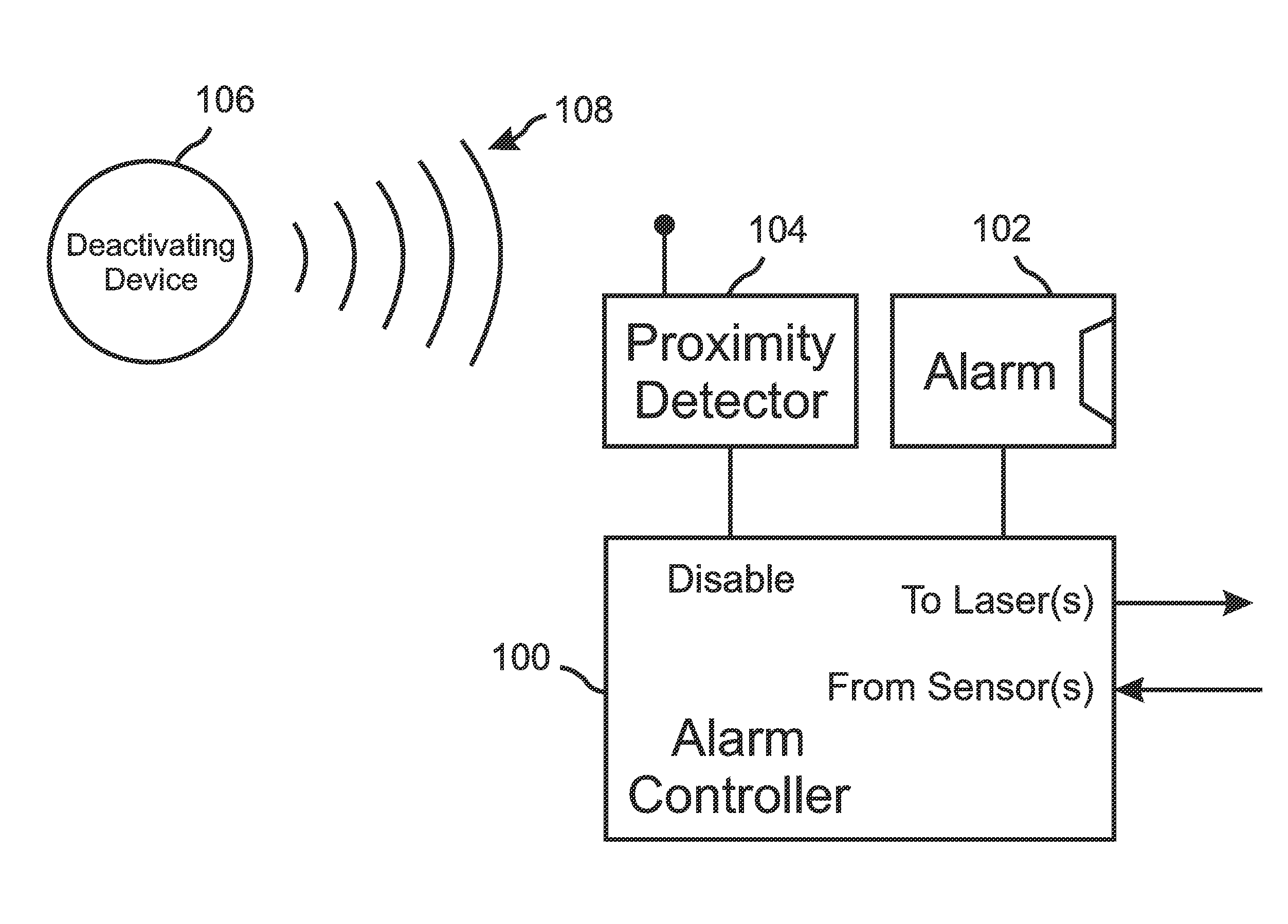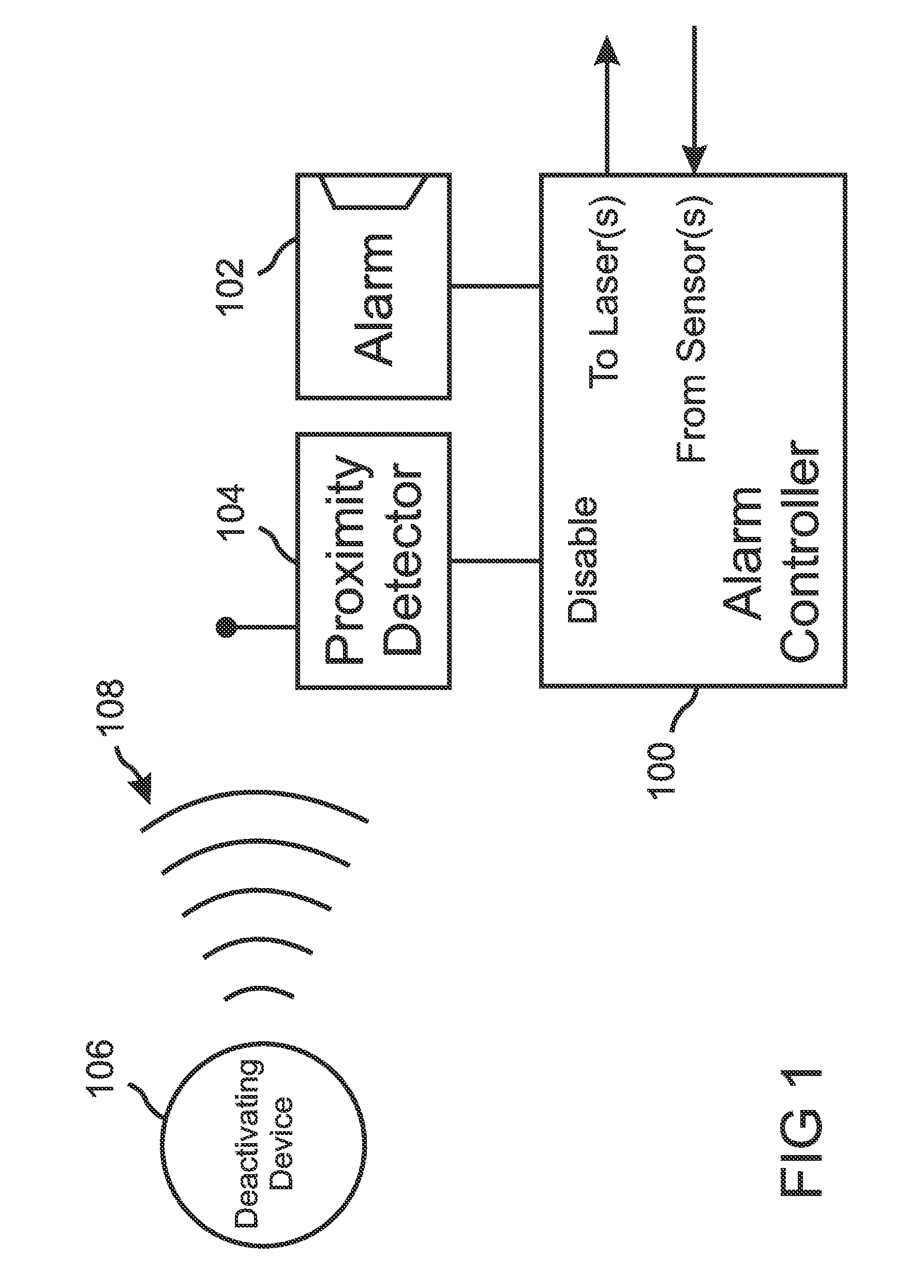Light-curtain alarm with proximity-detected access authorization
a technology of proximity detection and access authorization, applied in the field of alarm systems, can solve the problems of inconvenient and burdensome, completely impractical, and strong temptation to deactiva
- Summary
- Abstract
- Description
- Claims
- Application Information
AI Technical Summary
Benefits of technology
Problems solved by technology
Method used
Image
Examples
Embodiment Construction
[0050]With reference to FIG. 1, the present invention is an alarm system that includes a light-curtain generator (not shown) controlled by an alarm controller 100. The light-curtain generator is configurable so as to generate a light-curtain that surrounds a protected item, so that the item cannot be easily reached without penetrating the light-curtain. The alarm controller 100 includes an alarm unit 102 that is able to initiate a reactive action if the light-curtain is penetrated while the alarm system is active. In preferred embodiments, the reactive action can include sounding an audible alarm, switching on bright, flashing lights, broadcasting a recorded message, calling police and / or security personnel, and / or locking a container that physically protects the protected item.
[0051]The alarm system of the present invention further includes a proximity detector 104 that can wirelessly detect at least one deactivating device 106 when the deactivating device 106 is near the proximity...
PUM
 Login to View More
Login to View More Abstract
Description
Claims
Application Information
 Login to View More
Login to View More - R&D
- Intellectual Property
- Life Sciences
- Materials
- Tech Scout
- Unparalleled Data Quality
- Higher Quality Content
- 60% Fewer Hallucinations
Browse by: Latest US Patents, China's latest patents, Technical Efficacy Thesaurus, Application Domain, Technology Topic, Popular Technical Reports.
© 2025 PatSnap. All rights reserved.Legal|Privacy policy|Modern Slavery Act Transparency Statement|Sitemap|About US| Contact US: help@patsnap.com



